- Understanding the Importance of Soil Deoxidation
- What is Soil Deoxidation?
- Factors to Consider When Choosing a Soil Deoxidation Method
- Common Techniques for Soil Deoxidation
- 1. Drainage
- 2. Organic Matter Addition
- 3. Aeration
- 4. Chemical Amendments
- 5. Crop Rotation
- 6. Cover Crops
- 7. Mulching
- 8. Biochar Application
- Benefits of Chemical Soil Deoxidation
- Advantages of Biological Soil Deoxidation
- Using Mechanical Methods for Soil Deoxidation
- Tilling
- Aeration
- Soil Inversion
- Conclusion
- The Role of Physical Soil Deoxidation
- 1. Soil Aeration
- 2. Soil Compaction
- 3. Oxygenation of Soil Organisms
- 4. Prevention of Anaerobic Conditions
- 5. Overall Soil Health
- Combining Different Methods for Effective Soil Deoxidation
- 1. Chemical Deoxidation:
- 2. Organic Matter Addition:
- 3. Proper Irrigation:
- 4. Crop Rotation and Diversity:
- 5. Soil Testing and Monitoring:
- Considerations for Selecting the Best Soil Deoxidation Method
- Questions and Answers:
- Why is soil deoxidation important?
- What are some common methods of soil deoxidation?
- How do I determine the pH level of my soil?
- What is the ideal pH range for most plants?
- Can I use vinegar to deoxidize my soil?
- What are the advantages of using organic matter for soil deoxidation?
- Is it possible to deoxidize soil too much?
- Videos: Metallography Part II – Microscopic Techniques
Soil deoxidation is an essential process in agriculture and gardening that helps improve the health and fertility of the soil. Deoxidation involves the removal or reduction of excess oxygen present in the soil, which can lead to nutrient imbalances and hinder plant growth. There are various methods available for soil deoxidation, each with its own advantages and considerations. In this article, we will explore some tips and techniques for selecting the most suitable method of soil deoxidation for your specific needs.
One of the first factors to consider when selecting a method of soil deoxidation is the severity of the oxygen imbalance in your soil. In some cases, simple aeration techniques, such as turning the soil or using a garden fork, may be sufficient to address the issue. However, if the oxygen levels are significantly high, more intensive techniques may be required.
Another important consideration is the type of plants or crops you are growing in your soil. Different plants have different tolerance levels for oxygen levels in the soil, and some may be more sensitive to imbalances than others. It is important to research the specific needs of your plants and choose a deoxidation method that will not only address the excess oxygen but also provide the necessary nutrients for healthy growth.
Tip: Conducting a soil analysis can help determine the exact oxygen levels and nutrient deficiencies in your soil, guiding you in selecting the most appropriate deoxidation method.
The choice of deoxidation method also depends on factors such as cost, time, and labor involved. Some methods, such as chemical amendments, may provide quick results but can be expensive and require careful handling. On the other hand, natural methods like cover cropping or organic soil amendments may take longer to show effects but can be more sustainable and cost-effective in the long run.
Additionally, it is essential to consider the long-term impact of the deoxidation method on the soil and the surrounding environment. Some techniques, such as the use of certain chemicals, may have potential negative effects on the soil’s microbial activity or water quality. Choosing environmentally-friendly methods that promote soil health and biodiversity is crucial for sustainable agriculture and gardening practices.
Understanding the Importance of Soil Deoxidation
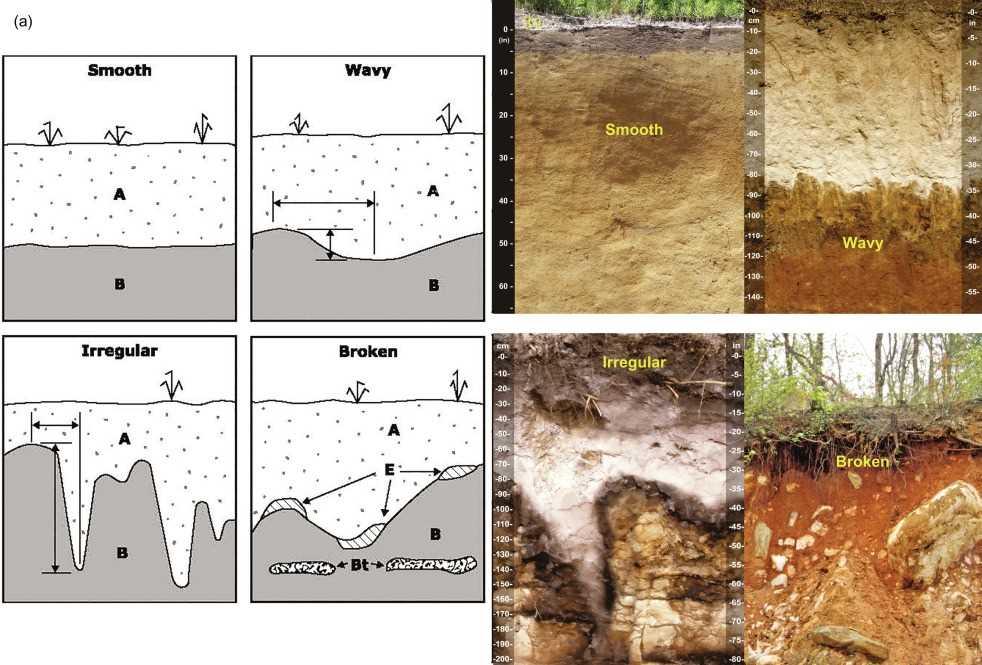
Soil deoxidation is a crucial process in gardening and agriculture that helps improve the fertility and productivity of soils. Understanding the importance of soil deoxidation can help farmers and gardeners make informed decisions about the methods and techniques they choose for soil treatment.
What is Soil Deoxidation?
Soil deoxidation, also known as soil oxygenation or soil aeration, refers to the process of increasing the amount of oxygen available in the soil. This is achieved by improving the soil structure, reducing compaction, and facilitating better air circulation.
Why is Soil Deoxidation Important?
- Enhanced Nutrient Absorption: When soils are properly deoxidized, plant roots can absorb essential nutrients more efficiently. Oxygen plays a crucial role in nutrient uptake, and lack of oxygen in the soil can lead to nutrient deficiencies and stunted plant growth.
- Improved Soil Microbial Activity: Soil deoxidation promotes the growth of beneficial soil microorganisms. These microorganisms help decompose organic matter, release nutrients, and improve soil structure. Oxygenated soils provide a favorable environment for these microorganisms to thrive and carry out their functions effectively.
- Prevention of Anaerobic Conditions: Anaerobic conditions occur when there is a lack of oxygen in the soil. In such conditions, harmful microorganisms, such as pathogenic bacteria, can thrive, leading to plant diseases. Deoxidating the soil helps prevent anaerobic conditions and reduces the risk of plant infections.
- Enhanced Water Drainage: When soils are compacted and lack sufficient oxygen, water drainage becomes poor. Deoxidating the soil helps improve its structure, allowing water to penetrate and drain more effectively. This prevents waterlogging and ensures the roots have access to both water and oxygen.
Methods of Soil Deoxidation
There are several methods and techniques available for soil deoxidation:
Cultivating: Regularly tilling the soil helps break up compacted areas and allows for better air circulation.
Aerating: Using tools such as a garden fork or aerator, create small holes in the soil to improve air and water penetration.
Adding Organic Matter: Incorporating organic matter, such as compost or well-decomposed manure, helps improve soil structure and increases oxygen content.
Draining Excess Water: Ensuring proper drainage through the use of drainage systems or raised beds helps prevent waterlogging and anaerobic conditions in the soil.
By understanding the importance of soil deoxidation, we can implement the necessary techniques and methods to ensure our soils are oxygenated and provide an optimal environment for plant growth. Whether you are a farmer or a gardener, giving attention to soil deoxidation can greatly contribute to the overall success of your crops and plants.
Factors to Consider When Choosing a Soil Deoxidation Method
- Type of Soil: One of the most important factors to consider is the type of soil that needs deoxidation. Different soil types may have varying levels of acidity or alkalinity, and this can impact the effectiveness of certain deoxidation methods. It is important to test the soil and understand its composition before selecting a deoxidation method.
- Level of Deoxidation Needed: The degree of deoxidation required for the soil will also dictate the method chosen. Some methods may be more effective at reducing acidity levels, while others may be better suited for neutralizing alkaline soils. Consider the target pH level and choose a method that can achieve the desired results.
- Cost: The cost of the deoxidation method is another critical factor to consider. Some methods, such as adding lime or sulfur, may be more affordable and accessible compared to other specialized techniques. However, it is important to balance the cost with the effectiveness of the method in order to achieve the desired results within budget constraints.
- Environmental Impact: It is essential to consider the environmental impact of the chosen deoxidation method. Some methods may introduce harmful chemicals or substances into the soil, which can have long-term effects on the ecosystem. Opt for environmentally friendly methods that minimize the risk of contamination or harm to the soil and surrounding environment.
- Time and Effort: The time and effort required to implement the deoxidation method should also be taken into account. Some methods may require multiple applications or extensive preparation, while others may provide immediate results. Assess the available resources, manpower, and timeframe to ensure the selected method is feasible and manageable.
- Expertise and Equipment: Consider the expertise and equipment required for the chosen deoxidation method. Some methods may demand specialized knowledge or equipment, making them more suitable for professionals or experts in the field. Ensure that the necessary resources and expertise are available or can be obtained before selecting a specific deoxidation method.
By considering these factors, one can make an informed decision when choosing a soil deoxidation method. Each factor plays a crucial role in the effectiveness, practicality, and impact of the selected method, ultimately contributing to the successful remediation of soil acidity or alkalinity issues.
Common Techniques for Soil Deoxidation
Deoxidation, or the process of removing excess oxygen from soil, is a critical step in ensuring optimal soil health and nutrient availability. There are several common techniques that can be used for soil deoxidation, each with its own advantages and considerations.
1. Drainage
One of the simplest and most effective methods of soil deoxidation is improving drainage. Excess water in the soil can contribute to oxygen depletion, so ensuring proper drainage can help alleviate this problem. This can be achieved by grading the land to create slopes, installing drain tiles, or creating raised beds.
2. Organic Matter Addition
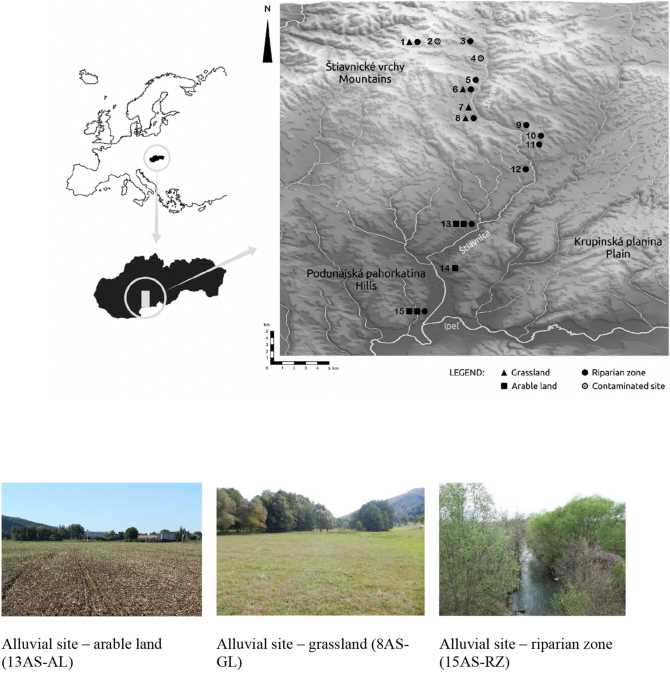
Adding organic matter, such as compost or well-rotted manure, to the soil can help improve its structure and increase its ability to hold oxygen. Organic matter acts as a sponge, holding moisture and allowing air to flow more freely through the soil.
3. Aeration
Aeration involves mechanically loosening the soil to create air channels and improve oxygen circulation. This can be done using a variety of tools, such as a garden fork or an aerator. Aeration not only helps deoxidate the soil but also improves water infiltration and nutrient uptake.
4. Chemical Amendments
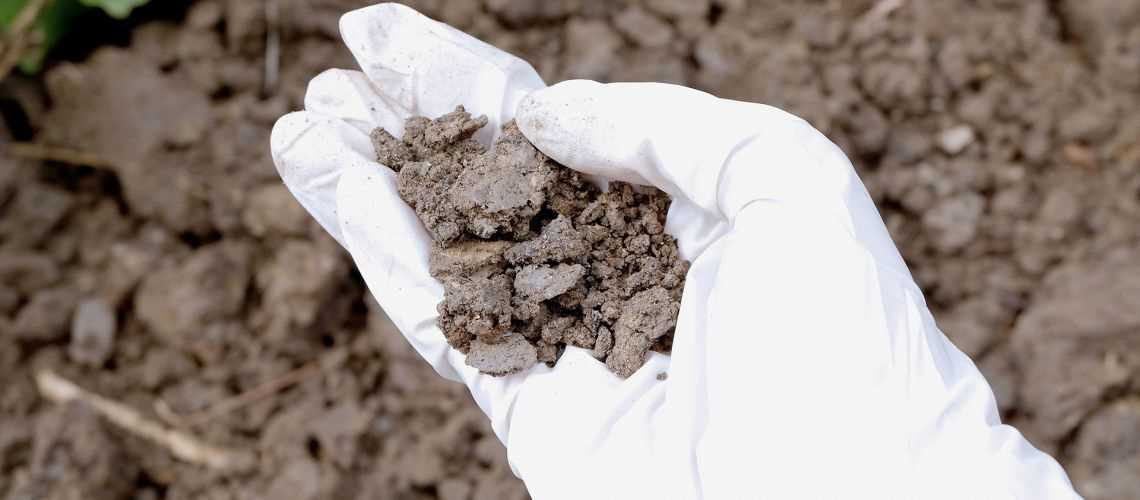
Chemical amendments, such as lime or sulfur, can be used to adjust the pH of the soil and improve oxygen availability. Lime can be added to raise the pH in acidic soils, while sulfur can be used to lower the pH in alkaline soils. It is important to test the soil pH before applying any chemical amendments to ensure proper dosage.
5. Crop Rotation
Implementing a crop rotation system can help deoxidate the soil by varying the types of plants grown in a particular area. Different crops have different nutrient requirements and root structures, which can help improve soil aeration and reduce oxygen depletion.
6. Cover Crops
Planting cover crops, such as legumes or grasses, during fallow periods can help improve soil health and deoxidation. Cover crops help reduce soil erosion, increase organic matter content, and enhance nutrient cycling, all of which contribute to better oxygen availability in the soil.
7. Mulching
Applying a layer of organic mulch, such as straw or wood chips, to the soil surface can help maintain moisture and regulate temperature, reducing oxygen depletion. Mulch also helps suppress weed growth and adds organic matter to the soil over time.
8. Biochar Application
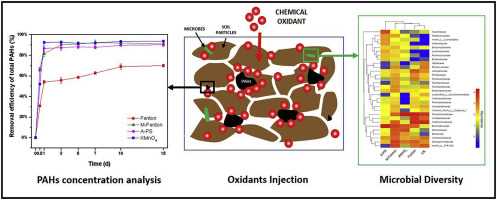
Biochar is a type of charcoal that can be added to the soil to improve its structure, water-holding capacity, and oxygen availability. Biochar also acts as a long-term carbon sink, helping to sequester carbon dioxide from the atmosphere and mitigate climate change.
When selecting a method of soil deoxidation, it is important to consider the specific characteristics of your soil and the desired outcome. It may be necessary to combine several techniques or experiment with different approaches to achieve the best results.
Benefits of Chemical Soil Deoxidation
Chemical soil deoxidation is a method commonly used to adjust the pH levels of acidic soils and improve their fertility. By applying certain chemicals to the soil, it can be effectively neutralized and made more suitable for plant growth. This method offers several benefits:
- Efficiency: Chemical soil deoxidation is a highly efficient method as it allows for precise control over the pH levels. By measuring the acidity and using the appropriate chemicals, the pH levels can be adjusted to the desired range quickly and accurately.
- Cost-effective: Chemical soil deoxidation is a cost-effective solution for remedying acidic soils. The chemicals used in the process are relatively inexpensive and readily available. Additionally, the application of chemicals requires less labor and equipment compared to other methods.
- Increased nutrient availability: Acidic soils often have low nutrient availability, as the acidity hinders the breakdown of organic matter and the release of essential nutrients. By deoxidizing the soil, the pH levels can be raised to a more favorable range, promoting the decomposition of organic matter and increasing the availability of nutrients for plant uptake.
- Improved microbial activity: Low pH levels in acidic soils adversely affect the activity of beneficial microorganisms, such as bacteria and fungi. Chemical soil deoxidation helps restore a more neutral pH, creating a favorable environment for the growth and activity of beneficial microbes. These microorganisms play a crucial role in nutrient cycling, improving soil structure, and suppressing diseases.
- Enhanced plant growth: By adjusting the pH levels to a suitable range, chemical soil deoxidation stimulates healthier plant growth. Plants are better able to absorb nutrients from the soil, leading to improved root development, increased vigor, and higher crop yields.
In conclusion, chemical soil deoxidation offers several benefits, including improved efficiency, cost-effectiveness, increased nutrient availability, enhanced microbial activity, and enhanced plant growth. It is an effective method for addressing the issues associated with acidic soils and promoting optimal soil fertility and plant productivity.
Advantages of Biological Soil Deoxidation
Biological soil deoxidation, also known as bio-remediation or bio-oxidation, is a method of soil deoxidation that utilizes natural biological processes to remove excess levels of oxygen from soil. This approach offers several advantages over other methods of soil deoxidation:
- Eco-friendly: Biological soil deoxidation is a sustainable and eco-friendly method as it relies on natural biological processes to degrade the excess oxygen present in the soil. It does not involve the use of harmful chemicals or other artificial means, reducing the impact on the environment and promoting the health of ecosystems.
- Cost-effective: Compared to other soil deoxidation methods, biological soil deoxidation can be more cost-effective. It requires minimal equipment and materials, primarily relying on the natural microbial populations present in the soil to carry out the deoxidation process. This can result in significant cost savings for soil remediation projects.
- Natural nutrient recycling: Biological soil deoxidation not only removes excess oxygen from the soil but also promotes natural nutrient cycling. The microbial activities involved in the deoxidation process can enhance the availability of essential nutrients, such as nitrogen and phosphorus, for plant uptake. This can improve soil fertility and support healthy plant growth.
- Long-term effectiveness: Unlike some other methods of soil deoxidation, biological soil deoxidation offers long-term effectiveness. Once the natural microbial populations in the soil are established and active, they can continue the deoxidation process to maintain a balanced oxygen level in the soil over time. This reduces the need for frequent reapplication of deoxidation treatments.
- Minimal disruption: Biological soil deoxidation minimizes the disruption of soil structure and microbial communities. It does not require extensive excavations or the addition of large amounts of external materials to the soil. This can help to preserve soil structure, prevent erosion, and maintain a healthy soil ecosystem.
In summary, biological soil deoxidation offers several advantages over other methods of soil deoxidation. It is an eco-friendly, cost-effective, and sustainable approach that promotes natural nutrient cycling, provides long-term effectiveness, and minimizes disruption to the soil ecosystem.
Using Mechanical Methods for Soil Deoxidation
In addition to chemical methods, mechanical methods can also be used to deoxidize soil. These methods involve physically manipulating the soil to improve its oxygen levels. Mechanical methods can be effective for both small-scale and large-scale soil deoxidation projects.
Tilling
Tilling is a common mechanical method used to deoxidize soil. This process involves using a tiller or cultivator to break up compacted soil and improve its aeration. By tilling the soil, oxygen is allowed to penetrate deeper into the soil profile, reducing oxygen deficiency.
Aeration
Aeration is another mechanical method used to increase oxygen levels in soil. This process involves creating small holes or channels in the soil to allow air to circulate more freely. Aeration can be done using a variety of equipment, including spike aerators, core aerators, or even manually with a pitchfork. Regularly aerating the soil can help alleviate conditions of oxygen deficiency.
Soil Inversion
Soil inversion is a more extensive mechanical method used for soil deoxidation. This method involves completely reversing the soil profile by physically flipping the topsoil layer upside down. By doing so, oxygen-rich topsoil is brought to the surface, while oxygen-deficient subsoil is buried. Soil inversion can be done using heavy machinery, such as a plow or backhoe, and is often used for large-scale soil remediation projects.
Conclusion
Mechanical methods can be a practical and effective approach to deoxidize soil. Tilling, aeration, and soil inversion are all viable options depending on the scale and severity of the oxygen deficiency. By improving soil aeration through mechanical means, plants can thrive and contribute to a healthier ecosystem.
The Role of Physical Soil Deoxidation
Physical soil deoxidation refers to the use of mechanical methods to improve soil aeration and reduce the concentration of oxygen-depleting substances. This technique plays a crucial role in maintaining optimal soil conditions for plant growth and overall soil health.
1. Soil Aeration
One of the primary benefits of physical soil deoxidation is the enhancement of soil aeration. A well-aerated soil allows for better root development, nutrient uptake, and microbial activity. It also helps prevent the accumulation of harmful gases, such as carbon dioxide and ethylene, which can inhibit plant growth.
To improve soil aeration, several physical methods can be employed. These include core aeration, where small plugs of soil are removed to create channels for air movement, and the use of mechanical aerators, such as spiked rollers or tines, to puncture the soil surface and allow better air penetration.
2. Soil Compaction
Physical soil deoxidation also plays a crucial role in reducing soil compaction. Compacted soils have poor porosity and limited drainage capacity, leading to oxygen deprivation and waterlogging. This can lead to root suffocation, nutrient deficiencies, and increased susceptibility to disease.
To alleviate soil compaction, various physical techniques can be employed. These include deep tilling or plowing to break up compacted layers, subsoiling to loosen lower soil horizons, and the use of specialized equipment, such as soil aerators or cultivators, to improve soil structure.
3. Oxygenation of Soil Organisms
Physical soil deoxidation is essential for the oxygenation of soil organisms, including beneficial bacteria, fungi, and insects. These organisms play a crucial role in nutrient cycling, organic matter decomposition, and overall soil fertility.
By improving soil aeration and reducing compaction, physical soil deoxidation creates favorable conditions for these organisms to thrive. Adequate oxygen supply ensures optimal microbial activity, promoting nutrient availability and the breakdown of organic matter into valuable humus.
4. Prevention of Anaerobic Conditions
Physical soil deoxidation is crucial in preventing the occurrence of anaerobic conditions, where oxygen is limited or absent. Anaerobic conditions can lead to the production of toxic compounds and the growth of harmful anaerobic microorganisms.
By enhancing soil aeration and minimizing compaction, physical soil deoxidation helps maintain aerobic conditions, discouraging the growth of anaerobes. This, in turn, promotes a healthy soil ecosystem and reduces the risk of soil-borne diseases.
5. Overall Soil Health
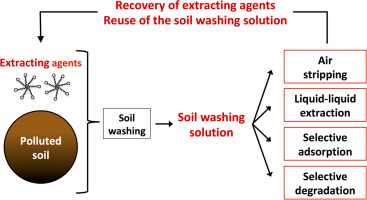
Physical soil deoxidation plays a vital role in maintaining overall soil health. By improving soil aeration, reducing compaction, oxygenating soil organisms, and preventing anaerobic conditions, it creates an optimal environment for plant growth and nutrient availability.
Regular physical soil deoxidation practices can lead to improved soil structure, increased water infiltration, enhanced nutrient cycling, and decreased reliance on synthetic fertilizers and pesticides. This, in turn, promotes sustainable agriculture and supports healthy, productive ecosystems.
Combining Different Methods for Effective Soil Deoxidation
When it comes to soil deoxidation, it is often necessary to combine different methods to achieve the best results. Each method has its own advantages and limitations, and by using a combination of them, you can address multiple issues and improve the overall health and fertility of your soil.
1. Chemical Deoxidation:
Chemical deoxidation involves the application of substances that can neutralize or remove excess oxygen in the soil. This method can be effective for immediate results and can be used to treat localized areas. However, it is important to carefully select the chemicals used and ensure proper application to prevent damage to the soil and surrounding environment. It is also important to note that repeated use of chemical deoxidation may lead to nutrient imbalances in the soil.
2. Organic Matter Addition:
Adding organic matter to the soil is a natural and sustainable method of deoxidation. Organic matter, such as compost, manure, or green manure, can increase soil organic carbon content, improve soil structure, and enhance microbial activity. These changes can help create an environment that is less prone to oxidation. Incorporating organic matter into the soil through practices like mulching or cover cropping can provide long-term benefits and improve overall soil quality.
3. Proper Irrigation:
Inadequate or improper irrigation practices can contribute to soil deoxidation. Overwatering can lead to waterlogged conditions, which restrict the flow of air and increase the likelihood of anaerobic conditions. On the other hand, under-watering can result in dry and compacted soil, making it difficult for oxygen to penetrate. By adopting proper irrigation techniques, such as targeted watering and monitoring soil moisture levels, you can maintain optimal soil conditions and prevent deoxidation.
4. Crop Rotation and Diversity:
Planting a diverse range of crops and implementing crop rotation can help combat soil deoxidation. Different crops have varying root structures and nutrient requirements, which can help improve soil aeration and nutrient cycling. Additionally, certain crops, like legumes, have symbiotic relationships with nitrogen-fixing bacteria, which can increase nitrogen availability and reduce the need for chemical fertilizers. By diversifying your crop selection and implementing rotation practices, you can enhance soil health and reduce the risk of deoxidation.
5. Soil Testing and Monitoring:
Regular soil testing and monitoring are essential for effective soil deoxidation. By analyzing soil samples, you can identify specific nutrient imbalances, pH levels, and other factors that may contribute to deoxidation. This information can help you tailor your deoxidation approaches and determine the most suitable combination of methods. Periodic monitoring of soil conditions can also help you track changes over time and make any necessary adjustments to your deoxidation strategy.
In conclusion, combining different methods for soil deoxidation can maximize effectiveness and address multiple factors that contribute to soil health and fertility. By utilizing a combination of chemical deoxidation, organic matter addition, proper irrigation, crop rotation, and soil testing, you can create an optimal environment for plant growth and ensure long-term soil sustainability.
Considerations for Selecting the Best Soil Deoxidation Method
When it comes to soil deoxidation, there are several methods available, each with its own advantages and disadvantages. Choosing the best method for your specific needs depends on a variety of factors that should be carefully considered. Here are some key considerations to keep in mind when selecting a soil deoxidation method:
- Soil Condition: Assess the current condition of your soil, including its pH level, nutrient composition, and structure. Some deoxidation methods may be more effective for specific soil conditions, so it is essential to choose a method that aligns with your soil’s needs.
- Budget: Consider the costs associated with each deoxidation method. Some methods may require specialized equipment, materials, or professional assistance, which can significantly impact your budget. Evaluate your financial resources and choose a method that best fits within your means.
- Timeline: Determine the timeframe in which you need to address the soil deoxidation issue. Certain methods may take longer to achieve desired results, while others offer quicker solutions. Take into account any time constraints and select a method that aligns with your timeline.
- Environmental Impact: Evaluate the potential environmental impact of each deoxidation method. Some methods may involve the use of chemicals or release harmful by-products, which can be detrimental to the ecosystem. Choose a method that minimizes negative environmental effects and promotes sustainable practices.
- Expertise and Resources: Assess your own knowledge and expertise in the field of soil deoxidation, as well as the resources available to you. Certain methods may require specialized skills or equipment that you may not possess. Consider your capabilities and choose a method that matches your expertise and available resources.
- Long-Term Effects: Consider the long-term effects of each deoxidation method on your soil. Some methods may provide quick fixes but fail to address underlying soil issues or cause additional problems down the line. Look for methods that offer sustainable and lasting solutions.
In conclusion, selecting the best soil deoxidation method requires careful consideration of factors such as soil condition, budget, timeline, environmental impact, expertise, resources, and long-term effects. By evaluating these considerations, you can make an informed decision that will effectively address your soil deoxidation needs.
Questions and Answers:
Why is soil deoxidation important?
Soil deoxidation is important because it helps improve the quality of the soil by reducing acidity and increasing nutrient availability for plants. It also promotes the growth of beneficial microorganisms and enhances overall soil health.
What are some common methods of soil deoxidation?
Some common methods of soil deoxidation include adding lime or limestone to the soil, applying gypsum, using organic matter such as compost or manure, and using soil amendments like sulfur or iron sulfate.
How do I determine the pH level of my soil?
To determine the pH level of your soil, you can use a soil testing kit or send a soil sample to a laboratory for analysis. The pH level can also be estimated based on the types of plants that grow well in your area, as different plants have different pH preferences.
What is the ideal pH range for most plants?
The ideal pH range for most plants is between 6 and 7. A pH below 6 indicates acidic soil, while a pH above 7 indicates alkaline soil. Some plants, however, have specific pH preferences, so it is important to research the specific pH requirements of the plants you intend to grow.
Can I use vinegar to deoxidize my soil?
Vinegar can be used as a natural and cost-effective method to deoxidize soil. It contains acetic acid, which can help reduce soil pH levels. However, it is important to use vinegar in moderation and to test the pH of the soil regularly to avoid over-acidifying the soil.
What are the advantages of using organic matter for soil deoxidation?
Using organic matter for soil deoxidation has several advantages. Organic matter helps improve soil structure, increases water retention capacity, promotes microbial activity, and releases nutrients gradually over time. It also helps to balance soil pH and reduce the need for synthetic fertilizers.
Is it possible to deoxidize soil too much?
Yes, it is possible to deoxidize soil too much. Over-deoxidation can lead to excessively high pH levels, which can be detrimental to plant growth. It is important to follow proper soil testing and monitoring procedures to avoid overcorrecting the pH and causing imbalances in the soil.







